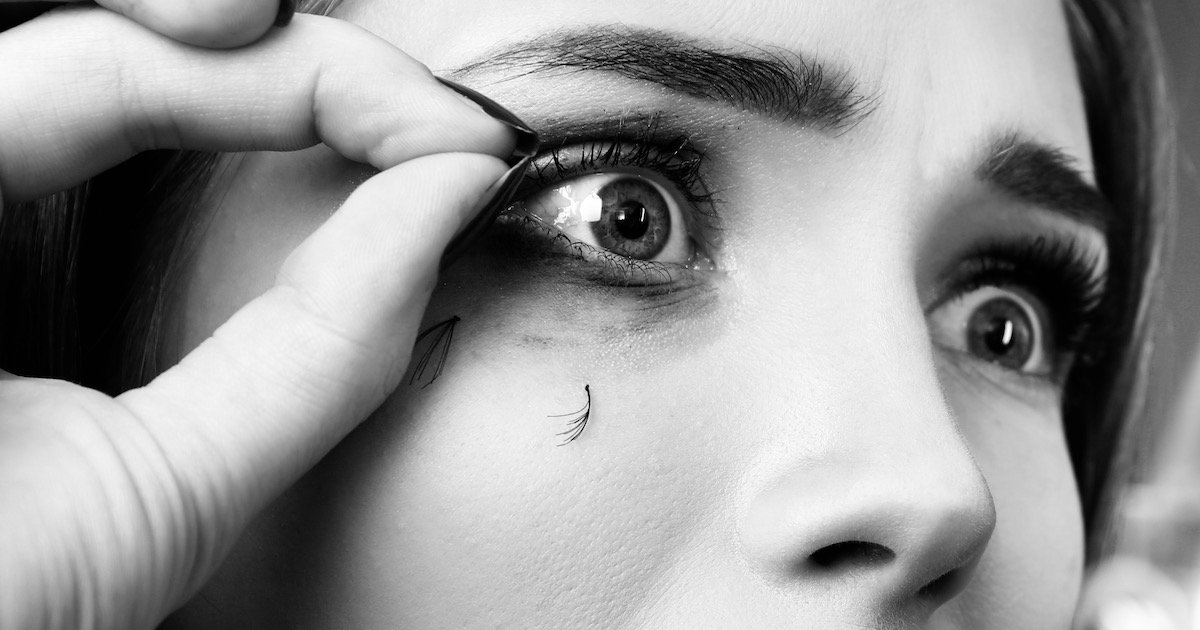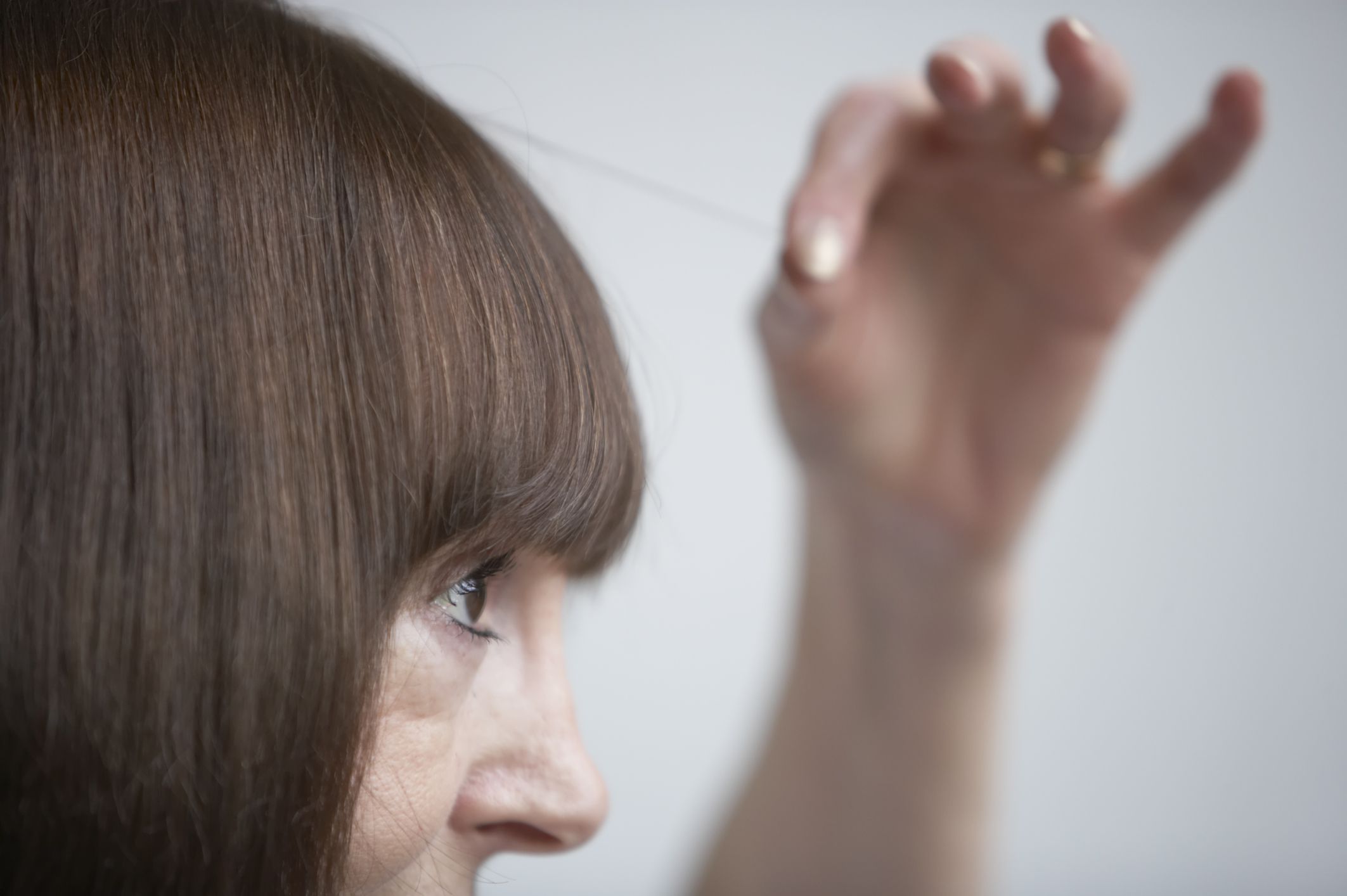Supporting Your Loved One With Trichotillomania
Don’t be a therapist: first of all, remember that as a parent, relative or friend, you are not that person’s therapist. Trying to be a therapist, or telling someone with trichotillomania what to do may backfire if they aren’t ready or willing to accept your advice! Instead, ask your child, “How can I support you? How can I be helpful?”
Ensure a healthy body: ensure proper sleep and exercise. Numerous studies have shown that exercise can reduce stress and anxiety . The Canadian Pediatric Society recommends that children should be active at least 90 minutes per day .
Firm, consistent parenting: anxious children feel calmer when life is predictable, when they know what is expected of them, and they know what the consequences will be.
Reduce expectations or demands at least initially: excess stress, expectations or demands contributes to anxiety. Typical stresses and problems that children face include: school home friends and boyfriends/ girlfriends. Help your child figure out what his/her stresses are, and which ones might be overwhelming. Gradually lower those stresses, demands or expectations until they are low enough for the person to cope. And when your child is doing better, those demands and expectations can be gradually raised over time.
Don’t blame. Remember that trichotillomania is not the person’s fault, and don’t simply tell them to stop pulling their hair, because if they could simply stop, then they would!
Are You Wondering About Trichotillomania
Are you an adult?
- If so, then consider seeing your primary care provider to see if there are other contributing medical issues, or life issues.
Are you a parent, and suspect that your child has trichotillomania?
- If so, then start by having your child seen by a medical doctor . The doctor may recommend more specialized mental health services or professionals such as a psychologist or psychiatrist.
Is Trichotillomania Genetic
Individuals with trichotillomania are more likely than others to have first-degree relatives with the condition, suggesting that the disorder runs in families and has a genetic element. But experts believe that while a tendency to pull out ones hair may be inherited to some extent, genes are not solely responsible for the development of trichotillomania.
Read Also: How To Cure Public Speaking Phobia
What Triggers Hair Pulling
Usual triggers include:
- Experiencing stressful life situations, which can then trigger stress, anxiety and depression. In such cases, hair pulling might be a way of trying to cope or deal with stress.
- Sedentary activities, e.g. such as reading, talking on the phone, doing schoolwork, or getting ready for bed. In these cases, hair pulling might be the brain’s way of trying to increase stimulation or keep occupied.
Causes And Risk Factors

Doctors do not know what causes a person to develop trichotillomania.
Some people report that hair pulling helps to alleviate boredom or stress. According to an article in the American Journal of Psychiatry , some people may pull their hair as a way to deal with adverse emotions.
Doctors do know that certain factors can increase a persons risk of developing trichotillomania. These risk factors include:
- Genetic history: A person who has a first-degree relative with trichotillomania is more likely to have the condition themselves.
- Childhood trauma: According to the National Organization for Rare Disorders, a person who has experienced childhood trauma may be more likely to develop trichotillomania. However, there is not enough research to support this idea.
Doctors are also working to identify changes in brain function or chemistry that could lead to trichotillomania. Certain changes may affect a persons ability to control impulsive behaviors, such as hair pulling.
Many people who have trichotillomania do not seek treatment for their condition.
Some people may be unaware that they have a recognized medical condition, and may simply view hair pulling as a bad habit. Others may be reluctant to seek a diagnosis for a variety of reasons.
Doctors do not diagnose many cases of trichotillomania, which means there is very little information on effective treatments available.
Recommended Reading: How To Be A Good Mom When Depressed
What Is The Difference Between Trichotillomania And Obsessive
TTM falls under the overall category of obsessive-compulsive disorder, but it has some key differences from OCD itself.
- Obsessions. OCD involves obsessions, which are thoughts or urges that a person cant control and doesnt want. TTM doesnt involve obsessions.
- Feeling of reward. When people with TTM pull out their hair, they often feel relief or other positive emotions. OCD doesnt involve positive feelings in that way.
Also Check: How To Overcome Sexual Performance Anxiety
Browser And Assistive Technology Compatibility
We aim to support the widest array of browsers and assistive technologies as possible, so our users can choose the best fitting tools for them, with as few limitations as possible. Therefore, we have worked very hard to be able to support all major systems that comprise over 95% of the user market share including Google Chrome, Mozilla Firefox, Apple Safari, Opera and Microsoft Edge, JAWS and NVDA , both for Windows and for MAC users.
Also Check: How To Write A Panic Attack
A Closer Look At The Causes Symptoms Prevalence And Treatment Of Trichotillomania
Article by:
Trichotillomania , also referred to as hair-pulling disorder, is a mental disorder classified under Obsessive-Compulsive and Related Disorders and involves recurrent, irresistible urges to pull hair from the scalp, eyebrows, eyelids, and other areas of the body, despite repeated attempts to stop or decrease hair pulling.
Hair pulling from the face can result in complete or partial removal of the eyebrows and eyelashes, while hair pulling from the scalp can result in varying degrees of patches of hair loss. The hair pulling and subsequent hair loss results in distress for the person, and can interfere with social and occupational functioning.
For some people, the symptoms of trichotillomania are manageable, but for others, the symptoms can be completely overwhelming.
Emotional States Related To Trichotillomania
Trichotillomania is linked to feelings at two ends of the spectrum for people with the condition.
People may associate TTM with both negative and positive emotions:3
- Negative emotions: When some people experience unwanted feelings like stress, anxiety, tension, boredom, anger, loneliness, or uncertainty, they may pull hair to diminish the emotional impact. In this way, TTM is a way to lessen these undesirable feelings and feel normal.
- Positive emotions: For other people, hair pulling is a behavior that feels good and rewarding. They feel calmer, relaxed, happy, and even more confident when pulling. In this way, TTM is a way to move from feeling normal to feeling good.
Its valuable to note that TTM can begin in one way before shifting to another. People could start the behavior as a way to feel well , but over time, they must continue the pulling to avoid feeling bad . This pattern is common with substance use and addiction.
You May Like: What Is The Difference Between Sadness And Depression
Social Anxiety And Trichotillomania
Social anxiety is a big one for a lot of people with trichotillomania because we have insecurities.
Insecurities are normal, but when you have to cover bald spots or put on fake lashes because you have none thats a whole nother level of social anxiety!!
I had really bad social anxiety as a child and it would often lead to hair pulling and thumb sucking in class.
The comments that I would receive from my peers was so rude that I tend to carry that with me still to this day.
Luckily for kids today, theres technology like Keen braceletsto make them aware that they are pulling in class, so you can at least put your hand down before the whole class sees you.
Unusual Symptoms Of Anxiety: Hair
Anxiety can harm your body in so many ways. Most commonly, people report feeling worried and tired or experiencing panic attacks. However, there are other, less common signs of anxiety that can be hard to recognize.
Among these less frequent symptoms is hair pulling, or the urges to do so. This condition is known as Trichotillomania, or hair-pulling disorder.
This article will take a look at Trichotillomania causes. It will also examine the link between Trichotillomania and anxiety.
You May Like: Can Anxiety Raise Your Blood Pressure
What Tests Will Be Done To Diagnose It
In some cases, a punch biopsy is necessary to confirm a diagnosis of TTM. This test can also rule out other skin conditions that might be the true cause of hair loss or hair pulling.
In cases where your healthcare provider suspects a blockage from swallowed hair, you might also undergo other diagnostic tests. These include imaging tests like a computerized tomography scan, blood testing for anemia and more.
Things You Can Try Yourself

Here are some tips from people with trich that may help when you feel the urge to pull your hair:
- squeeze a stress ball or something similar
- form a ball with your fist and tighten the muscles in that arm
- use a fidget toy
- wear a bandana or a tight fitting hat, such as a beanie
- come up with a saying that you repeat out loud until the urge to pull passes
- take a soothing bath to ease any stress or anxiety
- practise deep breathing until the urge to pull goes away
- exercise
Don’t Miss: Does Blair Have An Eating Disorder
What Are Common Symptoms And Medical Issues Of Trichotillomania
Common symptoms of TTM include:
- Bald spots on scalp or other areas of body
- Sparse eyebrows or eyelashes
- Playing with pulled hair by rolling it between fingers or brushing the hair follicle across lips or face region
- Chewing or swallowing pulled hair
- Hair pulling occurring in private
- Wearing wigs or hats, penciling in eyebrows, and/or wearing false lashes to cover up bald areas
- Low self-esteem, shame, embarrassment, anxiety, or depression
- Limited social interaction or fear of intimacy
Some possible medical issues related to TTM include:
- Carpel tunnel syndrome
- Trichophagia
- Trichobezoar
Trichotillomania Treatment And Home Remedies
Therapy
Many types of therapy can support people with trichotillomania and even help them stop hair pulling completely.
- Acceptance and commitment therapy. Youâll be able to practice accepting the hair-pulling urges without actually hair pulling.
- Habit reversal. This is often the main treatment for trichotillomania. Itâll help you practice other, less harmful habits instead of hair pulling, like clenching your fists when you have the urge to pull your hair.
- Cognitive therapy. This helps people explore and change the beliefs that lead to hair pulling.
There are no FDA-approved medicines for trichotillomania, but these drugs may control symptoms in some people:
- Antidepressants
- N-acetyl-cysteine, an amino acid supplement
You May Like: Can You Get Postpartum Depression While Pregnant
Treating Trichotillomania And Anxiety
If you or a loved one is experiencing Trichotillomania and anxiety, it is time to get professional help. Doing so will increase the likelihood of recovering and prevent the disorder from reoccurring in the future when stressful situations arise.
Our team at California Sunrise Recoverys Mental Health Center is skilled in treating anxiety and its symptoms, even those that are less frequent. We can also help get to the bottom of trichotillomania causes in each patient to avoid being affected by triggers in the future.
You May Like: Can Anxiety Cause A Heart Attack
How Do We Treat Trichotillomania
Cognitive behavior therapy is problem-focused, goal-oriented and proactive treatment approach, with particular emphasis on the present and future, as opposed to the past . CBT is a form of psychotherapy based on the premise that thoughts, emotions and behaviors are interconnected. Treatment emphasizes identifying, evaluating and modifying dysfunctional thinking patterns and problematic behaviors to improve overall quality of life. An advantage of CBT is that it teaches strategies to effectively cope even as difficult situations change and evolve. Collaboration and psychoeducation are key elements in guiding individuals to improved emotional well-being. CBT for TTM also includes the following:
Habit Reversal Training . HRT is a four phase, multi-component treatment for habit behaviors and is considered the gold-standard treatment. While varying components of this treatment can be helpful to the individual, the following three components are considered the most critical:
- Awareness Training. Helps the individual develop full awareness of circumstances surrounding urges and actions of pulling hair.
- Competing Response Training. Individuals learn alternative responses for the pulling behavior that is incompatible with the undesired behavior.
- Social Support. Involving supportive family members and friends into the treatment process by allowing them to provide positive reinforcement and gentle reminders of optimal times to use strategies to cope effectively.
Don’t Miss: Do You Cry During A Panic Attack
Trichotillomania Causes In Adults:
Research shows that people who acquire trichotillomania in their adulthood can be a consequence of another mental disorder. This means hair pulling is essentially a side effect of a more prominent disorder.
Its worth looking into it. Because my therapist taught me that I suffer from ADD. Which explained so much LOL. Other disorders that can coincide with trichotillomania are anxiety, depression, OCD, or ADD.
1. Feeling different textured hair
One of the biggest causes for trichotillomania is when you pull hair that feels different from the rest. The strand you pull stands out and seems out of place. The strand can be too thick, too curly, too coarse, or going in the wrong direction. You might even hunt for these strands. And to correct the strand, we pull it out so that its not among the rest.
If you want to learn more about your trichotillomania,read this bookOvercoming Body-Focused Repetitive Behaviors: A Comprehensive Behavioral Treatment. Its such an AMAZING resource and all of you should read it!! It taught me so much about this topic of textured hair and so much more.
Quick interventions:Tell yourself its okay to have imperfect strands, buy moisturizing hair products
2. Having an imbalance of neurons
Quick interventions:Exercise and eat healthy foods, engage in activities or hobbies that make you happy, take medication
3. Lacking awareness
4. Enjoying the physical sensations
Examples of sensations trichotillomania hair pulling can give you:
Is Trichotillomania An Anxiety Disorder
Trichotillomania, also known as hair-pulling, is an impulse control disorder. It could be caused by anxiety and stress. It can coexist with an anxiety disorder. However, psychiatrists consider it as a separate illness and not an anxiety disorder. Some affected persons have also been seen to pull out their hair in a relaxed mode, such as while watching a movie.
Other mental illnesses that trichotillomania is commonly found with includes:
- Attention-deficit hyperactivity disorder
Patients with trichotillomania have an uncontrollable impulse to pull the hair off the head, eyebrows, eyelashes, and even of beard. This can result in thinning of hair that can even progress to a patchy loss of hair . The condition may be so distressing to the affected people that they may avoid social and professional interactions.
Some affected people with trichotillomania can also chew or swallow the pulled-out hair. The condition is known as trichophagia and can result in the trapping of hair in the digestive system. if not identified and treated early, the trapped hair called hairballs or trichobezoar can lead to life-threatening complications.
Recommended Reading: Is Bipolar Disorder A Spectrum
How To Take Care Of Myself/manage Symptoms
TTM isnt a condition you should diagnose on your own. Thats because a trained and experienced mental healthcare provider is better prepared to determine if you have TTM or another health condition. Its also not something you should treat on your own, partly because both medication and therapy methods often need a prescription or other input from a healthcare provider.
How To Get Help For A Loved One

Helping a loved one centers around the idea of acknowledgement and acceptance of the condition. Let your loved one know what you have been seeing related to their hair pulling and your concerns. Offer to be involved as much or as little as they would like and suggest some available treatment options to get the process started.
Don’t Miss: Is Zoloft For Anxiety Or Depression
How Treatment Works
The first step is to find a specialist with specific knowledge of trichotillomania, since many traditional therapists wont know the cognitive behavioral approach that has been proven most effective, called habit reversal therapy.
The clinician will zero in on whether its automatic or focused pulling, and then try to understand when the pulling tends to happen. Is it when theyre bored? Stressed? Watching TV? In science class? Hiding in the bathroom? The child begins to self-monitor and track the behavior.
Once a professional has gotten to the root of the problem they can work together to physically stop the behavior by replacing it with less destructive alternatives called a competing response. Well try to find ways to put up barriers or slow down the pulling, he says. This can include wearing a headband or hat, or putting Band-Aids on the fingers.
Possible alternatives to hair pulling can include something like a Koosh ball, where they can isolate and pull the individual strands, finger fidget toys, and sensory finger puppets with a spiny back the kids can play with and pull on. Anything that the child can use and focus on thats easier to do than the pulling, says Dr. Bubrick.
When To Seek Help
If you cant stop pulling your hair and you experience negative repercussions in your social life, school or occupational functioning, or other areas of your life because of it, its important to seek help. Trichotillomania wont go away on its own. It is a mental health disorder that requires treatment.
Recommended Reading: Is An Eating Disorder A Mental Disorder